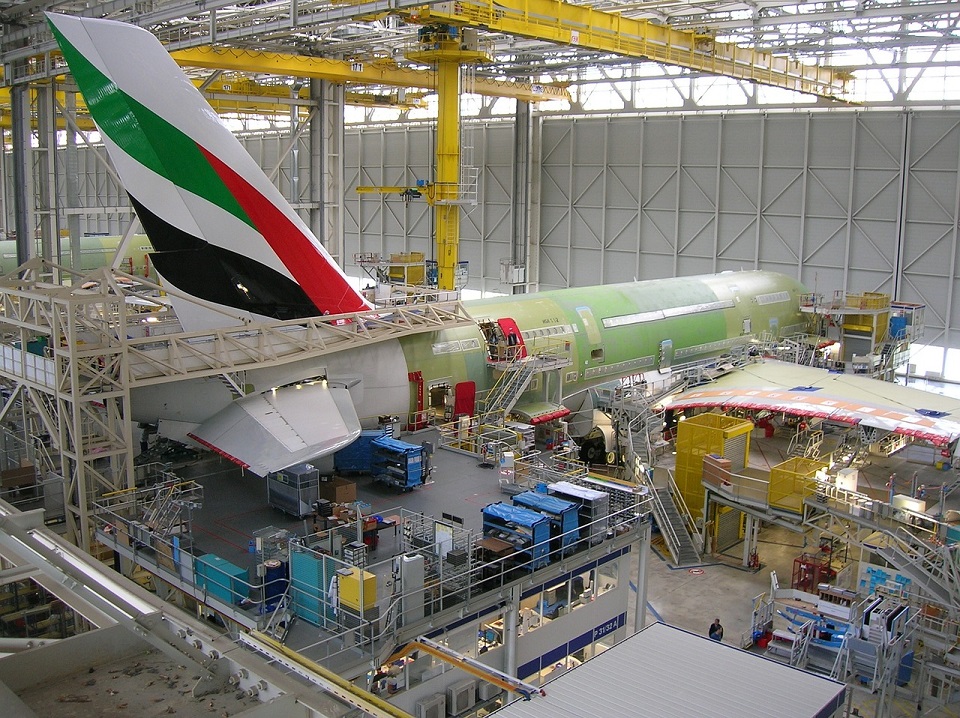Aviation
FAA Rolls Out New Cybersecurity Guidelines for Aircraft and Aviation Equipment

In a move aimed at bolstering the security of aircraft during their construction, the Federal Aviation Administration (FAA) is set to introduce new cybersecurity mandates for the manufacturing of aircraft and associated equipment.
This initiative aligns with the Biden administration’s broader efforts to enhance cybersecurity standards across the nation’s critical sectors. The proposed regulations will apply to multi-engine aircraft with more than 19 passenger seats or a maximum takeoff weight exceeding 19,000 pounds (approximately 8,618 kilograms).
These aircraft will be required to conduct a comprehensive cybersecurity risk evaluation, integrating cybersecurity considerations directly into the airworthiness assessment of newly constructed planes.
Qatar Airways Acquires 25% Stake in Airlink, Strengthening African Presence
Under the new rules, manufacturers will need to assess the severity of potential cybersecurity threats to various systems and architectures within the aircraft. The FAA expects these evaluations to be consistent with the existing means of compliance that manufacturers currently use to meet the FAA’s special conditions on cybersecurity.
The FAA’s initiative is driven by the increasing integration and connectivity of modern aircraft systems, which now link to external sources such as field-loadable software, maintenance laptops, airport gate link networks, USB devices, and various forms of communication including GPS, cellular, and satellite.
Russia to Deliver Vital Materials for India’s Sukhoi-30MKI Jets
With this heightened connectivity comes an increased risk of cybersecurity threats, necessitating constant vigilance and proactive measures from both regulators and industry.
The FAA emphasized that the overall impact on applicants and operators is expected to be minimal, as many of these practices are already in use. However, by codifying these standards into formal regulations, the FAA aims to reduce the time and costs associated with certifying new and modified aircraft while also harmonizing U.S. regulations with those of other international civil aviation authorities.

Aviation
COMAC Unveils Plans for the C929 to Rival Airbus and Boeing

After the success of China’s first C919 aircraft, the country is setting its sights on developing a larger plane. COMAC (Commercial Aircraft Corporation of China) has officially confirmed plans to build a widebody aircraft, marking a significant step in its aircraft lineup.
Traditionally, Airbus and Boeing dominate the widebody aircraft market, with decades of expertise in developing planes and engines capable of carrying heavy payloads. China, which currently relies on imported engines, is now aiming to challenge these giants with its own widebody jet, the C929, designed to compete with the Airbus A350 and Boeing 777.
American Airlines Is Looking for Flight Attendants: Apply Now
The C929 will be China’s first independently developed long-range widebody aircraft. It adheres to international airworthiness standards and boasts independent intellectual property rights. The baseline version is designed to seat 280 passengers and offers a range of 12,000 kilometers, catering to global demand for both regional and international air travel.
Russia, which also needs reliable narrowbody and widebody aircraft, could become a key customer for the C929. Additionally, China plans to target the broader Asian market as it continues to expand its aviation capabilities.
Close Call at Heathrow: BA Flight Narrowly Escapes Drone Collision
China’s aviation progress includes the ARJ21 (now called C909), a regional jet with 100 seats for shorter routes, and the C919, a narrowbody jet with 180 seats designed to rival the Boeing 737 MAX and Airbus A320. Both models have found increasing demand in the domestic market.
At China’s largest air show in Zhuhai, COMAC announced that Air China will be the launch customer for the C929 widebody jet, though details about order size and delivery timelines were not disclosed.
Other major deals announced by COMAC include:
- Hainan Airlines: Firm orders for 60 C919 and 40 C909 regional jets.
- Colorful Guizhou Airlines: 30 C909 jets, with 20 firm orders and 10 provisional agreements.
The C929, renamed from the CR929 after Russia withdrew from the joint development project in 2023, is expected to carry 280–400 passengers with a range of 12,000 kilometers, competing directly with Boeing’s 787 Dreamliner.
According to COMAC’s deputy general manager, Tong Yu, the first fuselage section of the C929 is expected by September 2027, with prototype test flights anticipated soon after.
-

 Aviation2 months ago
Aviation2 months agoMicrosoft Flight Simulator Raises $3 Million to Bring Back the An-225 Mriya
-

 Airlines2 months ago
Airlines2 months agoQantas Engineers Stage Walkout Over Cost of Living Concerns
-

 Airlines2 months ago
Airlines2 months agoQatar Citizens Can Travel to the United States Without a Visa
-

 Aviation2 months ago
Aviation2 months agoQatar Airways bans these new Electronic Devices on plane
-

 Airlines2 months ago
Airlines2 months agoJapan Airlines Rolls Out Free Domestic Flights to International Passengers
-

 Defence2 months ago
Defence2 months agoWhich Country Has the Largest Fleet of Fighter Aircraft?
-

 Airport2 months ago
Airport2 months agoWestern Sydney Airport Welcomes Its First Plane After 6 Years of construction
-

 Travel2 months ago
Travel2 months agoQatar Airways Launches Four Additional Flights from Amsterdam








